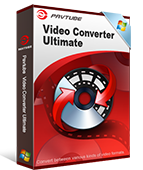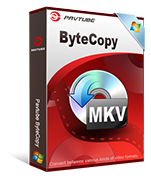Q: I bought “The Martain” 3D Blu-ray this week and expect to view on the Google Cardboard VR just arrived yesterday. How to make it happen? Any suggestion would be appreciated.
A: You must own a Windows Phone, Note 4, Galaxy S6, or Galaxy S6 Edge, right? You need it as its screen and engine; and you need a converter that can rip your 3D Blu-ray to Cardboard VR compatible 3D videos such as 3D SBS MP4 so that you can enjoy your 3D Blu-ray movies more conveniently. One free tip, I know Pavtube BDMagic works like a charm; you can give it a shot.
Need a cheap — really cheap — virtual reality headset? Google’s got you covered with its $15 Cardboard, which you can now buy directly from the company’s web store. Cardboard is a simple, cardboard-based (duh) VR headset that works with nearly all newer smartphones and apps that support Google’s Cardboard platform. Although Google Cardboard has some limitations compared with other popular VR goggles like Oculus, Gear VR, its accessible price allows nearly anyone to get one Google Cardboard to enjoy 3D viewing experience on any Windows Phone, Android phone or iPhone. Come back to the point, how can we play and view 3D Blu-ray movies on Google Cardboard VR?
- Hot Search: Top 3D VR Glasses/Headsets | View 3D Movies on VR Headsets | Best 3D Movie Converter for VR Headsets | iTunes on VR One
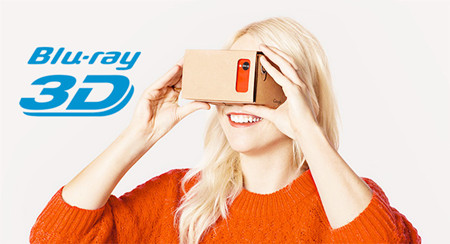
If you have collected lots of 3D Blu-ray Discs at home. It’s a pity what you can not get them on your Andorid/iOS devices through Google Cardboard with 3D Effects. As we know, you can use a free app called Cardboard theater, which allows you to enjoy your own 2D and 3D movies in a virtual cinema. Cardboard theater supports SBS, Over/Under and Red-Cyan anaglyph formats as well as plain 2D movies in all formats originally supported by your phone. So the workaround is to download a 3D Blu-ray ripping program that can convert a frame packed Blu-ray to a SBS.
So, To rip 3D Blu-ray to 3D videos easily and quickly, you have to transfer your 3D Blu-ray to Any Andorid/iOS devices. Here, we just show you how to copy 3D Blu-ray to Windows Phone for Google Cardboard. Both Andorid/iOS devices and Google Cardboard support SBS MP4 video, so we can consider to backup 3D Blu-ray to 3D MP4 with Blu-ray Ripper.
Here, I recommend you for the user-friendly Pavtube BDMagic. It can legally remove copy protection from commercial 3D Blu-ray and change it to 3D MP4 for Google Cardboard with original video quality. It can offer you 6X fast Blu-ray ripping speed by H.264 codec on Windows with NVIDIA CUDA technology. So you don’t need to cost too much time on the job. Read review to learn more its functions.
Just free download and install it at below: 

Other Download:
– Pavtube old official address: http://www.pavtube.cn/blu-ray-ripper/
– Cnet Download: http://download.cnet.com/Pavtube-BDMagic/3000-7970_4-75922877.html
How to Copy 3D Blu-ray to Windows Smartphone for Google Cardboard?
Step 1: Load Blu-ray disc, Run the 3D Blu-ray to Google Cardboard Converter on your PC and click “File” icon to load movie from your Blu-ray disc. 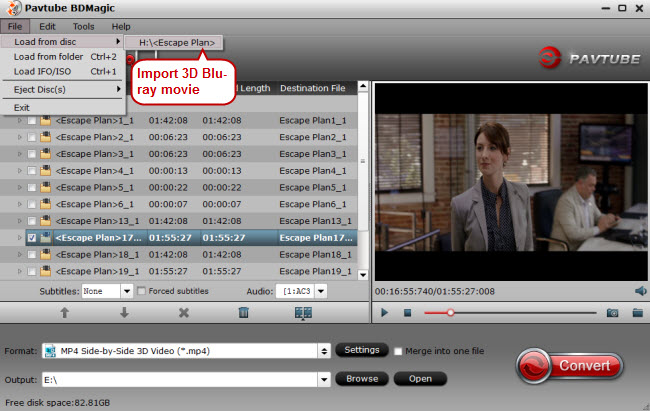
Step 2: Choose an output format
Google Cardboard can accept 3D SBS MP4 so you can click “Format” bar on the interface then navigate to “3D Video” to choose “MP4 Side-by-Side 3D Video(*.mp4) “. For 3D side-by-side (SBS) movies, please make sure that the filename contains “SBS”. 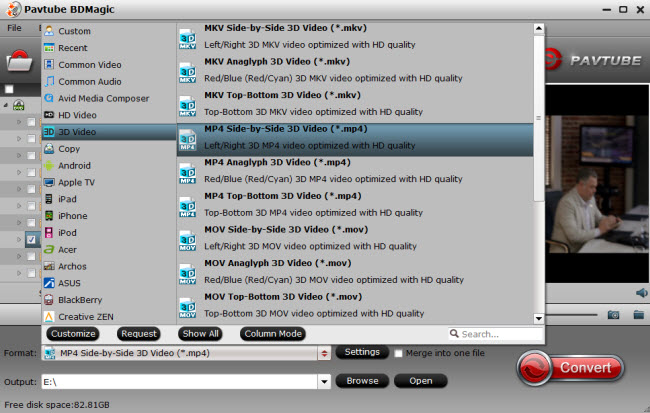
Note: Although there is a profile created by the application, we can always change some parameters of resolution, compression, audio, etc. An important issue that you must consider that in Samsung Gear VR resolution for each eye is not FullHD but half the QHD screen. So you can free change your target video size, bitrate, frame rate and 3D depth in “Settings”. If you want to get best video quality, pls switch them to “original”. 3D movies should be encoded “full side-by-side” with a 1:1 pixel aspect ratio. Content mastered at 1920×1080 compressed side-by-side 3D should be resampled to 1920×540 resolution full side-by-side resolution (Learn more). 
Step 3: Start to rip 3D Blu-ray to 3D SBS MP4
Hit the “Convert” button to transfer your 3D Blu-ray to MP4 Side-by-Side 3D video for playback with Google Cardboard. After conversion, you can hit “Open” to find the generated 3D videos. Then, you can transfer the converted video files to Andorid/iPad or iPhone and other devices for Google Cardboard enjoyment.
Now, Simply select one of your files and Play 3D content in full immersion with Google Cardboard through Oculus Cinema! Have Fun!
After you finished the steps as above, check out all the virtual reality headsets you need to know and all the 3D Glassless Pavtube also Supported:
Samsung Gear VR: Powered by technology from Oculus, the Samsung Gear VR was effectively the first VR headset on the market. To use it, you simply grab a Samsung phone, download apps and games from the Oculus store, and clip it into the headset. The original model supported the Note 4, but a new model out this spring is compatible with the Galaxy S6 and Galaxy S6 Edge.
Carl Zeiss VR One: Like Samsung’s Galaxy Gear, the Carl Zeiss VR One uses a mobile phone as its display. However, unlike the Galaxy Gear, it supports both the iPhone 6 and the Galaxy S5, although you need to specify which one when you buy.
Oculus Rift: As a teenager, Luckey collected VR tech and was fascinated with making his own headset in his garage. Numerous prototypes and a $2bn Facebook buyout later, Oculus is still the biggest name in VR, thanks to a partnership with Samsung and its own upcoming headset.
HTC Vive: Offers the best virtual reality we’ve ever experienced. This is thanks to the headset’s two 1080 x 1200 screens, the highest resolution displays out there, and the two sensors that hang on your wall to track movement.
Sony Morpheus: Probably has the best chance of becoming a commercial success. First of all, while most VR headsets require a decent PC or the latest mobile phone, Sony’s Morpheus just needs a PlayStation 4. Secondly, Sony has some of the best game studios in the world working on games for Morpheus: its London and Tokyo studios have produced some excellent VR demos, and Uncharted developer Naughty Dog could be next.
Microsoft HoloLens:Instead of immersing the player in an entirely computer-generated world, HoloLens augments reality, adding interactive holograms to the space you already inhabit. Microsoft showed demos of people building Minecraft structures on top of their tables, exploring objects such as a motorbikes, or being able to create video feeds on any surface you like.
Razer OSVR: OSVR stands for Open Source Virtual Reality, so everything about the platform is open and freely available. You can even download the 3D files and create your own headset, if you like.
FOVE Eye Tracking VR: FOVE believes that the future of VR control is eye-tracking, and its headset uses tiny cameras to track where you’re looking in real-time.
Archos VR Glasses: Archos has been undercutting manufacturers of mobile phones, tablets and portable games consoles for years, so it was only a matter of time before they got into the VR market.
Google Cardboard: A somewhat tongue-in-cheek take on VR, but it makes a great weekend project if you want to see what the fuss is about. You can either download the instructions and make your own headset, or you can buy a kit from a variety of vendors.
Avegant Glyph: The Glyph is compatible with anything that supports external displays, so you can use it with your home consoles or practically any modern mobile phone. You simply slip the band over your eyes, cover your ears with the headphones, and watch or play your content on the retina-quality display.



